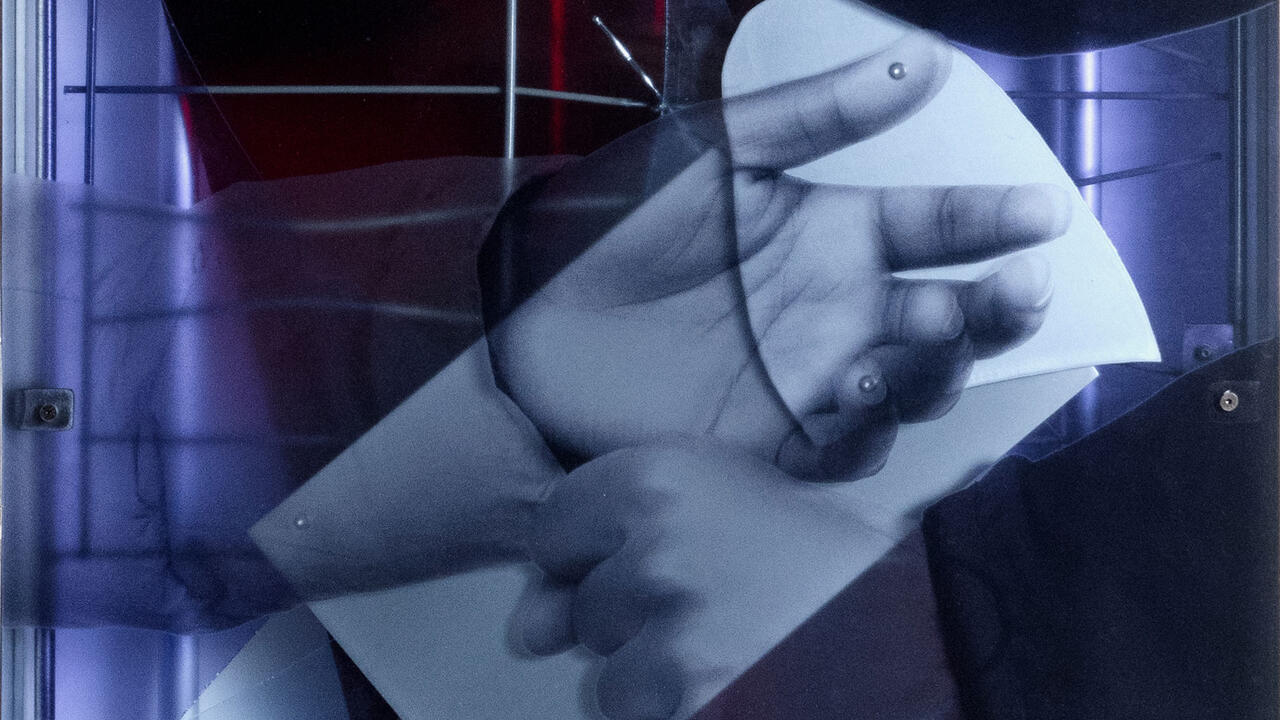Beatrice Marchi
Fanta Spazio, Milan, Italy
Fanta Spazio, Milan, Italy

For her second solo show – at Fanta, a not-for-profit space recently opened beneath a derelict train bridge – Beatrice Marchi issued an invitation to female artists she knew personally or admired, asking them to contribute a work about sex. These pieces had to be on white A4 sheets of paper and make no use of digital techniques. Any interpretation of the theme would be acceptable, and the invitation could be extended, so that Marchi wouldn’t have total control over the final exhibition except through the display design. Many of the 38 artists on show (among them Chiara Fumai and Deborah Ligorio) happen to be Italian, but this is more a result of happenstance than design.
For ‘Susy Culinski & Friends’ (the imaginary character’s name in the exhibition title includes an allusion to Italian for ‘ass’) the walls of Fanta’s main space have been covered with light-blue and lilac padded velveteen. The fabric was bleached with patterns designed by Anna Franceschini and Alice Tomaselli, and depicts sweetly stylized penises pointing upwards amid tufts of vegetation or in little plant pots. The identical white frames of the drawings are scattered irregularly across the space, indenting the softly padded wall lining like upholstery nails.
The drawings are as diverse and wide-ranging as you might expect given a topic such as ‘sex’. Dafne Boggeri and Giovanna Silva contributed abstract depictions of stylized genitalia transfigured into symbols or pictograms. Elodie Seguin and Sara Enrico made subtly allusive drawings (in pencil and watercolour, respectively) of unmistakably sensual yet oddly tender subjects: a luscious cake and a set of pencils sliding into, or out of, a floppy, curtain-like fabric. Ludovica Carbotta’s drawing, one of the most captivating in the show, offers a disturbing take on the classical myth of Pygmalion, with the sculptor caressing from behind the motionless marble statue he has created. The powerful sensuality of the gesture acquires a wholly different tone once the visitor realizes its object is, well, an object.
Carbotta’s drawing is not the only work on display that depicts the female body or one of its parts as an inanimate thing. Although sometimes ironic, this approach has a deeper, darker resonance. Marchi’s exhibition of women drawing about sex opened two days after ‘Ennesima’ (Umpteenth), a sprawling survey of Italian art between the 1970s and the present day, curated by Vincenzo de Bellis at the Milan Triennale, in which fewer than one in five artists are women. ‘Susy Culinski’ was heralded online by the animated GIF of a smiling, bespectacled woman holding a pen, busy drawing, between her breasts; the e-flux announcement for ‘Ennesima’ features a photograph of a fully clothed man crouching next to a standing, naked woman, who is tied to the wall by her neck.
The work (Lo Scorrevole, The Sliding, 1975) is by Vettor Pisani and, arguably, the curator’s aim in using it may have been to question patriarchal gender roles as much as to depict them. Still, considering the under-representation of women in Italian art and the amount of gendered violence tolerated within Italian society, if not explicitly endorsed by some of its mainstream media, De Bellis’s approach to these matters seems hard to justify.
The works in Marchi’s exhibition are markedly distant from Pisani’s blunt machismo. In most of them, sex is depicted as funny, sweet, soft, easy, mysterious, cerebral or even banal, as if to counterbalance stereotypical depictions of violence and the objectification of women. The insurgence against such imagery, however, could strike a viewer (a male viewer?) as spilling over into reticence, or a kind of modesty. No work in this exhibition about sex depicts a full sexual act, very few show human bodies and, in most cases, these are alone.
Marchi’s own contribution to the show approaches the subject with a more raunchy sense of humour. It is a blue pastel drawing of a woman bending forward, her bottom adorned with languid eyes and cartoonishly long lashes, and tears streaming down; the anus, shaped like a half-open mouth, is poised in front of a barricade of eager microphones. Like the exhibition as a whole, the drawing seems to demand increased attention to, and power for, female sexuality, while decrying the forms in which such attention and power are commonly understood.






















